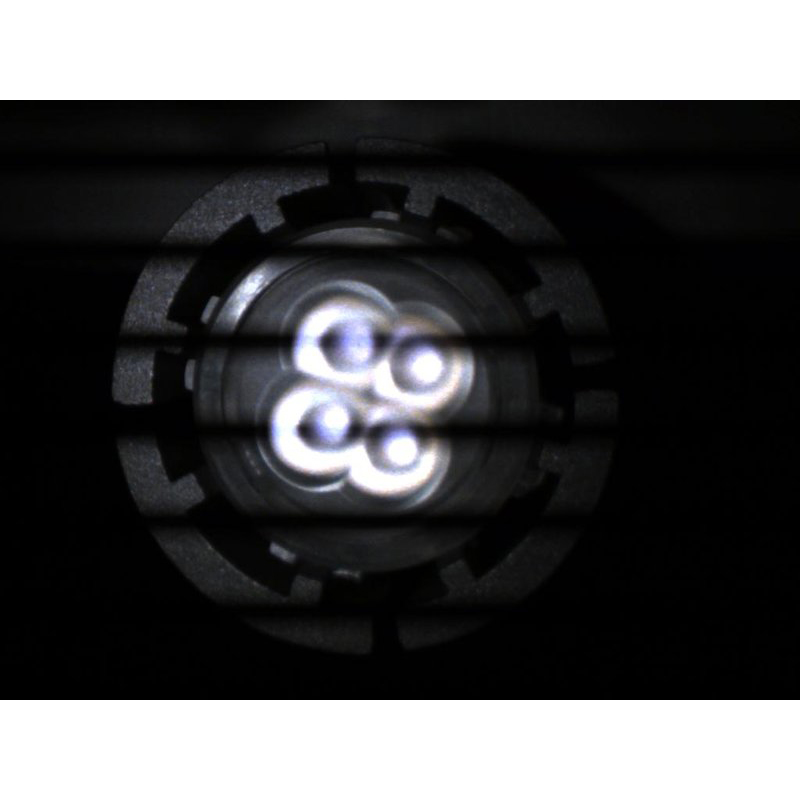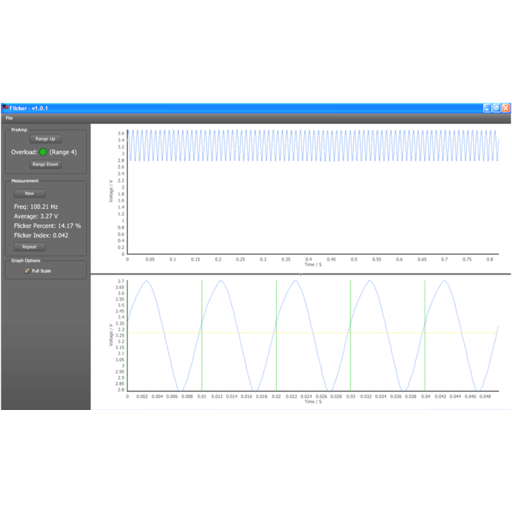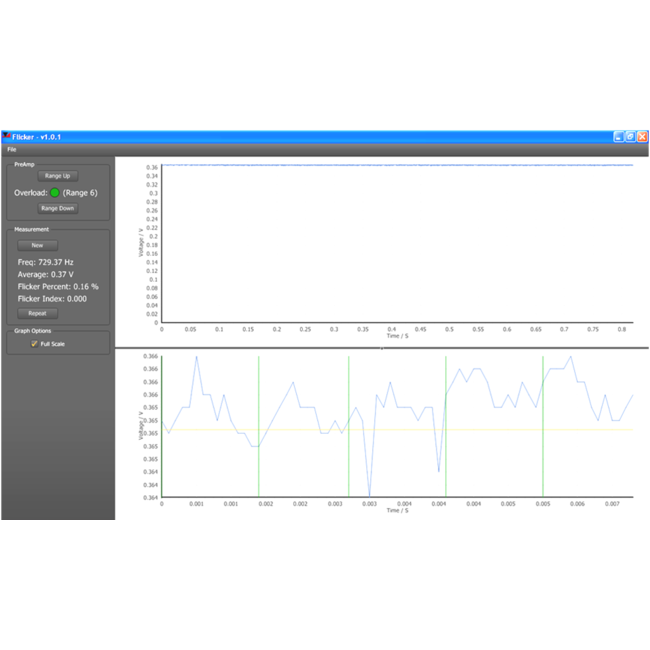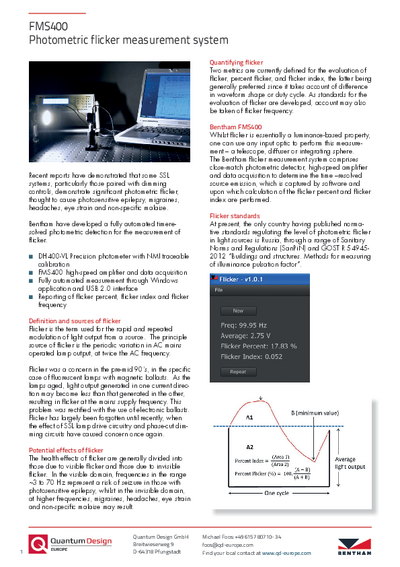Light source modulation characterisation
Flicker400 from BenthamThe Flicker400 offers lamp and luminaire manufacturers deeper insight into the flicker characteristics essential in development of high-quality novel lighting, increasingly relevant for those featuring dimming control.
- Windows control software (BenWin+) provides full automation via USB 2.0
- Setup comprises a DH400-VL v-lambda detector, ORM400 photometric detector, the 477 and the USB Digital Scope
Further information
Comprising a close-match photometric detector, high-speed amplifier and data acquisition, the Flicker400 provides high-accuracy flicker percent, frequency and index assessment in a straightforward, highly repeatable procedure.
Whilst the photobiological impact of flicker is still widely debated, the implications for image recording equipment are undeniably apparent and of increasing significance with the continued adoption of SSL in studio and stadium environments.
Core benefits
- Simple establishment of all key flicker metrics
- Stay ahead of the legislative curve
- Easy integration into existing photometric testing facilities
- Quickly gain insight into source performance
Reported parameters
- Percent flicker
- Flicker index
- Flicker frequency
Specifications
Photometric detector/ ORM400
| Spectral function | CIE 1924 V(λ) Spectral Luminous Efficiency Function for Photopic Vision |
| Spectral response range | 380-780nm |
| Photopic match, f1 | <3% |
| Angular response, f2 | <1.5% |
| Linearity, f3 | < .2% |
| Typical responsivity | 5x 10-10A/lux |
| Calibration traceability | Physikalisch-Technische Bundesanstalt (PTB, Germany) |
| Diffuser diameter | 7mm |
| Stray light suppression | Variable aperture baffle tube |
| Connector | BNC |
| Amplifier gain ranges | 1010-105 V/A |
| Maximum input | 100µA |
| Input impedance | Virtual ground |
| Gain accuracy & stability | ±1 %, 200 ppm/ °C |
| Output stability | 5-500 ppm/ °C dependent on gain range |
| ADC resolution | 4 ½ digit BCD (0 to 19999) (>14 bit resolution) |
| Luminous intensity range | 0.01D2-200000D2 (D photometric distance (m)) |
477 - AC Current pre-amplifier frequency response
| V/A | Bandwidth (-3Db) |
| 103 | >1MHz |
| 104 | 1MHz |
| 105 | 260kHz |
| 106 | 30kHz |
| 107 | 23kHz |
| 108 | 4kHz |
General
| Power supply | PMC MAC ORM400 |
| Interface | USB 2.0 |
System requirements
| Component | Current (220V) (A) |
| ORM400 | <0.1 |
| Total | <0.1 |
Applications
Over the past year, reports have demonstrated that some SSL systems, particularly those paired with dimming controls, demonstrate significant photometric flicker, thought to cause photosensitive epilepsy, migraines, headaches, eye strain and non-specific malaise. Whilst the photobiological impact of flicker is still widely debated, the implications for image recording equipment are undeniably apparent and of increasing significance with the continued adoption of SSL in studio and stadium environments.
Definition and sources of flicker
Flicker is the term used for the rapid and repeated modulation of light output from a source. The principle source of flicker is the periodic variation in AC mains operated lamp output, at twice the AC frequency. Once an issue with fluorescent tubes with magnetic ballasts, flicker has largely been forgotten until recently, when the effect of SSL lamp drive circuitry and phase-cut dimming circuits have caused concern once again.
Potential effects of flicker
The health effects of flicker are generally divided into those due to visible flicker and those due to invisible flicker. In the visible domain, frequencies in the range ~3 to 70Hz represent a risk of seizure in those with photosensitive epilepsy, whilst in the invisible domain, at higher frequencies, migraines, headaches, eye strain and non-specific malaise may result.
Quantifying flicker
Two metrics are currently defined for the evaluation of flicker, percent flicker, and flicker index, the latter being generally preferred since it takes account of difference in waveform shape or duty cycle. As standards for the evaluation of flicker are developed, account may also be taken of flicker frequency.
ENERGY STAR® Method of measurement for light source flicker
- California Energy Commission Appendix JA10
- 1789-2015 - IEEE Recommended Practices for Modulating Current in High-Brightness LEDs for Mitigating Health Risks to Viewers
- UEFA Stadium Lighting Guide 2016
- CIBSE LG04 Lighting Guide 04: Sports Lighting - LG4
- ASSIST recommend Recommended Metric for Assessing the Direct Perception of Light Source Flicker, Volume 11, Issue 3 (ASSIST 2015)
Downloads
Contact

Navigation
Categories
Contact
Quantum Design GmbH
Roddarestigen 3
SE 182 35 Danderyd
Sweden
| Phone: | +46 8 41071791 |
| E-mail: | nordicqd-europe.com |








